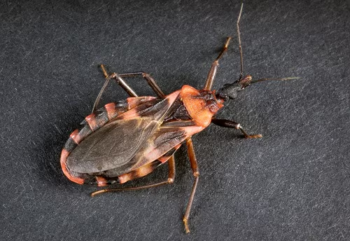Last year, 413 suicides were reported in San Diego County – a record number for the region. They all had one thing in common: each was preventable.
Given these statistics, County officials joined mental health providers and local higher education officials on Friday to remind the public that knowing the warning signs of suicide can help save someone’s life.
September 8 – 14 is National Suicide Prevention Week, a perfect time to raise awareness about this important public health issue and to learn what you can do to prevent suicide.
At a Friday event supporting the effort, San Diego County Supervisor Ron Roberts became emotional as he recalled being told that his own father had taken his life.
“I know the personal scars that you carry,” Roberts said.
“Suicide is doubly tragic because of the lives lost and the emotional heartbreak to family members and other loved ones,” Roberts said. “To some, suicide may seem to be the only solution to their problems. It is not. Help is available for anyone considering ending their lives, and it is there 24/7 with a visit to the It’s Up to Us website or by calling (888) 724-7240.”
Knowing how to recognize the warning signs and where to get help can make the difference between life and death.
Most people who attempt or die by suicide showed one or more warning signs prior to the suicide attempt.
People think about suicide due to feelings of hopelessness or powerlessness. These individuals may have recently experienced the loss of a job or loved one, ended a relationship, or lost their home.
Warning Signs
Some warning signs of suicide include:
- Talking of hurting or killing oneself
- Divorce, separation, stress on family
- Loss of health
- Loss of job, home, personal security
- Increased alcohol or drug use
- Isolation from family and friends
- Daring or risk-taking behavior
Mental health experts believe that for every suicide, six other people who were close to the victim suffer lasting emotional trauma.
“Recognizing the warning signs of suicide is key to preventing someone from ending their life,” said Nick Macchione, director of the County Health and Human Services Agency. “Suicide can be prevented. It’s important to know the warning signs and how to assist a suicidal person.”
The County launched the It’s Up to Us campaign in 2010 to prevent suicide by raising awareness about the warning signs. The County is also supporting the Not On My Watch campaign taking place at San Diego State University and several other colleges and universities, including UC San Diego, the University of San Diego, San Diego City College, Mira Costa College, Grossmont College and California State University at San Marcos.
As part of the campaign, student leaders are being trained to recognize the warning signs of suicide and to identify support services available at each campus.
“As part of our campaign to prevent suicide at SDSU, we are joining with other local universities to bring information and resources to the college students of San Diego during the upcoming suicide prevention week,” said Marilyn Newhoff, dean, College of Health and Human Services, San Diego State University. “With increased knowledge of warning signs and resources, our goal is for our students to become active participants in the prevention of suicide.”
So what should you do when a person asks for help? If the person is in immediate danger, call 9-1-1.
Additional Steps
You should also:
- Take it seriously
- Listen; suicidal behavior is a call for help
- Give and get help right away
- Don’t leave the person alone
- Refer the person to professional help
Suicide prevention is an important component of Live Well, San Diego, the County’s ongoing initiative to improve the health and wellbeing of local residents.
The County offers a suicide prevention training at no cost. The Question, Persuade and Refer training is equivalent to a CPR course to teach people how to recognize the warning signs of suicide and save a life.
For more information about suicide, risk factors, warning signs, how to get help, resources and training that is available, visit It’s Up to Us.
Help is also available at the County’s Access and Crisis Line at (888) 724-7240.




